-
0
Patient Assessment
- 0.1 Patient demand
- 0.2 Overarching considerations
- 0.3 Local history
- 0.4 Anatomical location
- 0.5 General patient history
-
0.6
Risk assessment & special high risk categories
- 5.1 Risk assessment & special high risk categories
- 5.2 age
- 5.3 Compliance
- 5.4 Smoking
- 5.5 Drug abuse
- 5.6 Recreational drugs and alcohol abuse
- 5.7 Parafunctions
- 5.8 Diabetes
- 5.9 Osteoporosis
- 5.10 Coagulation disorders and anticoagulant therapy
- 5.11 Steroids
- 5.12 Bisphosphonates
- 5.13 BRONJ / ARONJ
- 5.14 Radiotherapy
- 5.15 Risk factors
-
1
Diagnostics
-
1.1
Clinical Assessment
- 0.1 Lip line
- 0.2 Mouth opening
- 0.3 Vertical dimension
- 0.4 Maxillo-mandibular relationship
- 0.5 TMD
- 0.6 Existing prosthesis
- 0.7 Muco-gingival junction
- 0.8 Hyposalivation and Xerostomia
- 1.2 Clinical findings
-
1.3
Clinical diagnostic assessments
- 2.1 Microbiology
- 2.2 Salivary output
-
1.4
Diagnostic imaging
- 3.1 Imaging overview
- 3.2 Intraoral radiographs
- 3.3 Panoramic
- 3.4 CBCT
- 3.5 CT
- 1.5 Diagnostic prosthodontic guides
-
1.1
Clinical Assessment
-
2
Treatment Options
- 2.1 Mucosally-supported
-
2.2
Implant-retained/supported, general
- 1.1 Prosthodontic options overview
- 1.2 Number of implants maxilla and mandible
- 1.3 Time to function
- 1.4 Submerged or non-submerged
- 1.5 Soft tissue management
- 1.6 Hard tissue management, mandible
- 1.7 Hard tissue management, maxilla
- 1.8 Need for grafting
- 1.9 Healed vs fresh extraction socket
- 1.10 Digital treatment planning protocols
- 2.3 Implant prosthetics - removable
-
2.4
Implant prosthetics - fixed
- 2.5 Comprehensive treatment concepts
-
3
Treatment Procedures
-
3.1
Surgical
-
3.2
Removable prosthetics
-
3.3
Fixed prosthetics
-
3.1
Surgical
- 4 Aftercare
Zygomatic implants
Key points
- Zygomatic implants are an evidence-based surgical and prosthetic solution for both two-stage and immediate loading protocols
- Today, zygomatic implants are usually placed using an immediate loading protocol
- The main indication for zygomatic implants is the severely resorbed edentulous maxilla, but they can also be used in partially edentulous situations
- Indications for zygomatic implant insertion include: alternative for sinus augmentation, failed sinus augmentation, rehabilitation after tumor resection or trauma, failure of conventional implants, failure of previous bone grafts
- The placement of zygomatic implants requires adequate training and surgical experience
Indications
Zygomatic implants have been documented as a an alternative for the rehabilitation of the atrophic posterior maxilla with both the classical two stage and immediate loading protocols. Zygomatic implants avoid grafting and sinus lift procedures and therefore contribute to a shorter and more comfortable treatment. Further indications for zygomatic implants include failed conventional implant placement, failed sinus augmentation or grafting procedures, rehabilitation after tumor and trauma resections.
In the atrophic posterior maxilla, in general one zygomatic implant is placed on each side of the maxilla, in combination with 2-4 conventional implants in the anterior region.
For the totally resorbed maxilla, when placement of anterior implants is not possible the concept can be expanded by inserting 2 additional zygomatic implants in a more anterior position (Quad zygoma). Zygomatic implants nowadays are usually immediately loaded with a fixed bridge.
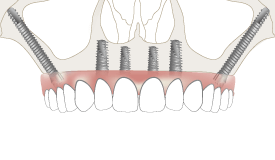
Clinical recommendations
In the classical protocol, zygomatic implants are inserted through the alveolar crest and maxillary sinus involving the zygomatic bone for anchorage (Fig 1). For visualization of the correct implant position access to the maxillary sinus is necessary. Access preparation to the maxillary sinus is performed at a lateral posterior aspect at the later implant position and the Schneiderian membrane is elevated in an anterior direction. The implant is placed subsequently and is located at the inner aspect of the sinus wall, often without membrane perforation (Fig 2).
Alternatively the extrasinus placement approach has been described in order to reduce incidence of sinus complications and to improve the implant location and position of the emergence profile more crestally.
Due to the long drilling distance to the zygomatic bone and in order to protect critical adjacent anatomical structures, placement of zygomatic implants requires considerable surgical training and experience and meticulous diagnostic planning. To receive an adequate overview over the anatomical structures, presurgical 3D planning with CT or CBCT scans is a must.
The drill protocol is applied in order to achieve an implant insertion torque between 35-45 Ncm in all bone densities for optimal primary stability in immediate function protocols. Use of optional drill steps such as the twist step drills are recommended in case the insertion torque is surpassing 45 Ncm.
Caution: Never exceed an insertion torque of 45 Ncm. Overtightening may lead to damaging of the implant and fracture or necrosis of the bone.
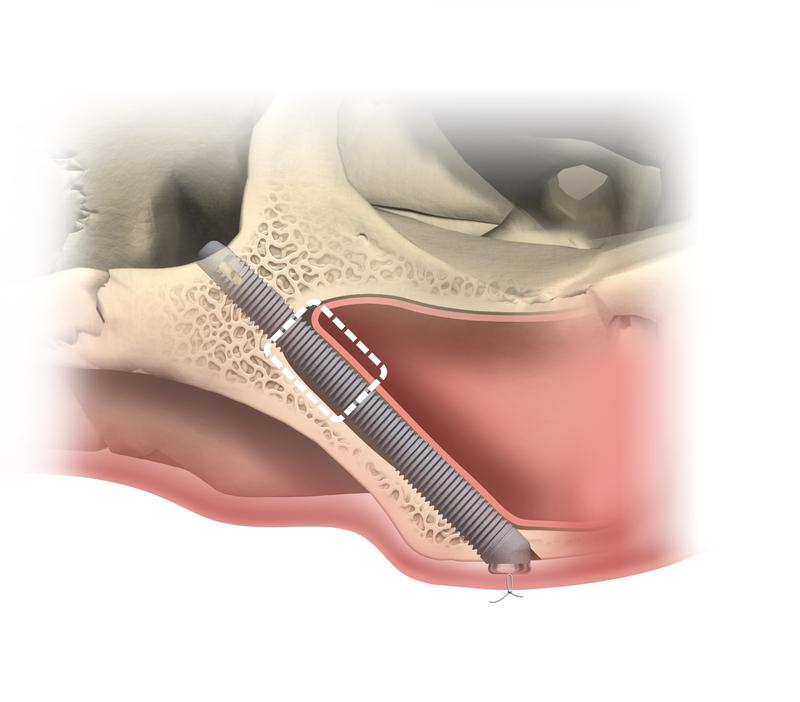
Prognosis
Long-term prospective studies with the classical 2-stage and immediate loading approaches document high success rates with only minimal complications. The cumulative survival rate of zygoma implants is 96% after 12 years.
Complications
The most common complication associated with zygomatic implants is sinusitis. Appropriate pre-surgical diagnostics and evaluation of the sinus as well as using the extra-sinus surgical approach and immediate loading of the implants seem to reduce or even eliminate this complication.
Other complications reported during and after the insertion of zygoma implants include infraorbital nerve paresthesia, orosinusal fistula and perforation of the orbit.
Treatment examples using zygomatic implants
1 Rehabilitation of the severly resorbed maxilla with four zygomatic implants
This patient presented with a totally resorbed maxilla and has never received implant-supported treatment before. Four zygomatic implants have been placed in the upper jaw and the existing removable dentures have been converted into fixed implant-supported prostheses for both the upper and lower jaws.
2 Placement of four zygomatic implants after failure of previous implant treatment
3 Brånemark System Zygoma educational video
Clinical topics
Related articles
Additional resources
Additional external resources
Questions
Ask a questionFacial Nerve damage from Zygomatic Implants
I have suffered from nerve damage to my left cheek muscle to my nose from quad zygomatic implants.
is there any treatments to help this improve muscle movement such as acupuncture or laser?
I have suffered from nerve damage to my left cheek muscle to my nose from quad zygomatic implants.
is there any treatments to help this improve muscle movement such as acupuncture or laser?

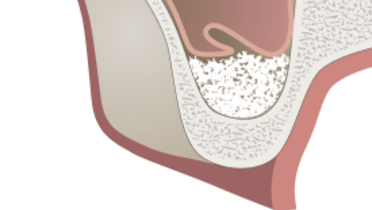
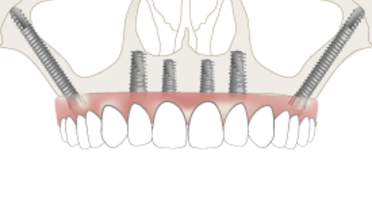
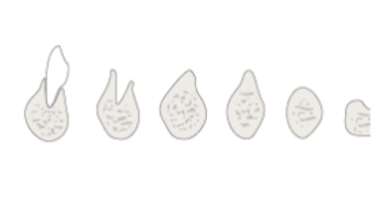


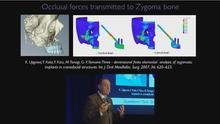

howw do you treat an abscess and sinus infection on a zygomatic implant
how do you treat an abscess and sinus infection on a zygomatic implant
how do you treat an abscess and sinus infection on a zygomatic implant